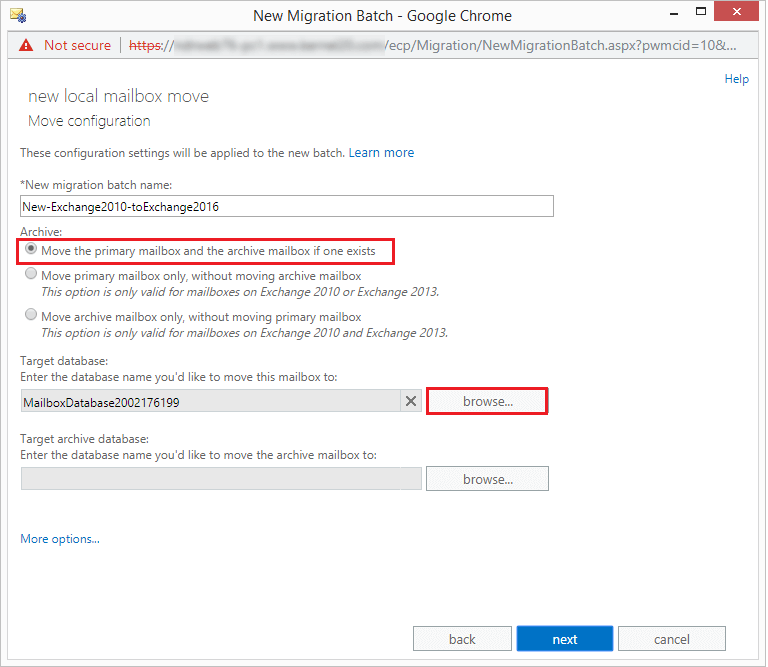


The users configured in the mailbox database will have no access to their email. The time of the operation depends on how much data there is to move. After the files finish moving, the database is mounted. Important: The database will dismount, and the files will move to the new location. The LogFolderPath parameter specifies the folder where log files are stored.Īfter running the command, confirm both times with Y and press Enter. All current database files are moved to this location. The EdbFilePath parameter specifies a new file path for the database. The (E:) drive is the database disk, and the (F:) drive is the logs disk. The volumes are configured on both different physical disks. We will place the database file and logs from the same mailbox database to different volumes. Move Exchange mailbox database to another drive We will configure the name when we move both the database and log folder to another drive. edb file (database) and log folder do still have the unique generated name. We already did rename the mailbox database name to DB01. LogFolderPath : C:\Program Files\Microsoft\Exchange Server\V15\Mailbox\Mailbox Database 1237333779 C:\>Get-MailboxDatabase | Format-List Name, EdbFilePath, LogFolderPathĮdbFilePath : C:\Program Files\Microsoft\Exchange Server\V15\Mailbox\Mailbox Database 1237333779\Mailbox Database 1237333779.edb We will use the Get-MailboxDatabase cmdlet. Let’s get the path of the mailbox database. Run Exchange Management Shell as administrator. Read more: Exchange database best practices » Get path Exchange mailbox database Note: For recoverability, move the database (.edb) file and logs from the same database to different volumes backed by different physical disks. We can have the database and logs on the same disk or separate. If the Exchange Server is going to be a member of a DAG, configuring two disks is not required. One disk is for the database, and the other disk is for the database logs. If the Exchange Server is a standalone server. After that, move the database and logs to the created ReFS volumes. Results after moving Exchange database to another driveīefore moving Exchange mailbox database to another driveīefore moving the database to another drive, we recommend configuring the volumes as ReFS in Exchange.Move Exchange mailbox database to another drive.Before moving Exchange mailbox database to another drive.


 0 kommentar(er)
0 kommentar(er)
